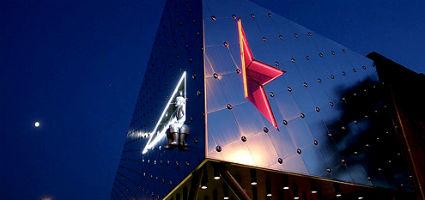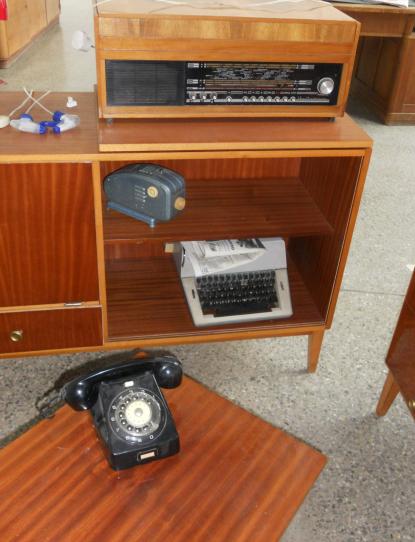2024. May 7. Tuesday
Fullstop Half a century at Vásárhely Human Educational Centre - Hódmezővásárhely
 |
Address: 6800, Hódmezővásárhely Andrássy út 34.
Phone number: (62) 530-940
E-mail: emlekpont@emlekpont.hu
Opening hours: Tue-Sun 10-17
|
The exhibition has closed for visitors.
2012.04.14. - 2012.10.14.
Museum tickets, service costs:
|
Ticket for adults
|
800 HUF
|
|
|
Group ticket for adults
(over 15 people)
|
600 HUF
|
|
|
Ticket for students
|
400 HUF
|
|
|
Group ticket for students
(over 15 people)
|
300 HUF
|
|
|
Ticket for pensioners
|
400 HUF
|
|
|
Group ticket for pensioners
(over 15 people)
|
300 HUF
|
|
|
Guide
|
3000 HUF
|
|
|
Guide
|
5000 HUF
|
The exhibition of the Memorial Point deals with the art scene of Vásárhely in the 1960s through special subjects and solutions, also from a special angle: through State Security reports. Significantly more material has been preserved of the art and cultural scene in Hódmezővásárhely than in any other towns. This is the first time that an exhibition reveals what artists, intellectuals and studios were involved in provincial towns those days, and it is done through the eyes of State Security.

Artists were one of the chief targets of State Security in the sixtieth in Hódmezővásárhely. It was especially true for two people: the writer Lajos Bibó and the former museum director Miklós Galyasi. They were partly in focus because of their ’Horthiyst’ and ’56’ past, partly because young intellectuals, officers surrounded them. Political police of Csongrád County noticed these two older men and the groups surrounding them. They decided to keep an eye on them, have them watched, gain information on them and the people they contact, paying extra attention on those people’s political views. Of course, they coyuld not forget about the general atmosphere around them either. The suspicion of the State Security grew when some of the renitent youths took part in the publication of a "samizdat", the periodical called Kép-Írás.
Our exhibition is divided into three main sections. In the first one, we deal with the imaginary flat of Miklós Galyasi which was a centre for culture in Hódmezővásárhely those days. It was the room where anti-revolutionist former museum director studied.
The second part deals with artists, literary men, intellectuals through agents’ report on their works of art or writings. With this, the all viewing eye of the a III/III department is revealed.
The third section contains a T-flat: an imaginary flat for secret meetings. The officers took reports in these flats and briefed the agent on his next task. T-flats were set up by the Ministry of Interior III/III. nationwide to provide a quiet place for the agents where they can report on their clients.
The basic thesis for the exhibition and its concept is revealed at the two end-points where the visitors may have a look inside the flat once owned by Galyasi while actually looking out of the T-flat. In the former flat, the person of the watched, in the other the person of the viewer dominates.
The organizers of the exhibition invited the visitors to do their own researches by finding and checking out documents on a file cabinet. They may even find the clue to some of the reports. The curator of the exhibition, the historian Tamás Mészáros, filed a great number of documents; he put the information into chronological order and did so to provide a more lucid picture on the work of State Security. On the reports, the visitors may also read the notes of the supervising officers.

Artists were one of the chief targets of State Security in the sixtieth in Hódmezővásárhely. It was especially true for two people: the writer Lajos Bibó and the former museum director Miklós Galyasi. They were partly in focus because of their ’Horthiyst’ and ’56’ past, partly because young intellectuals, officers surrounded them. Political police of Csongrád County noticed these two older men and the groups surrounding them. They decided to keep an eye on them, have them watched, gain information on them and the people they contact, paying extra attention on those people’s political views. Of course, they coyuld not forget about the general atmosphere around them either. The suspicion of the State Security grew when some of the renitent youths took part in the publication of a "samizdat", the periodical called Kép-Írás.
Our exhibition is divided into three main sections. In the first one, we deal with the imaginary flat of Miklós Galyasi which was a centre for culture in Hódmezővásárhely those days. It was the room where anti-revolutionist former museum director studied.
The second part deals with artists, literary men, intellectuals through agents’ report on their works of art or writings. With this, the all viewing eye of the a III/III department is revealed.
The third section contains a T-flat: an imaginary flat for secret meetings. The officers took reports in these flats and briefed the agent on his next task. T-flats were set up by the Ministry of Interior III/III. nationwide to provide a quiet place for the agents where they can report on their clients.
The basic thesis for the exhibition and its concept is revealed at the two end-points where the visitors may have a look inside the flat once owned by Galyasi while actually looking out of the T-flat. In the former flat, the person of the watched, in the other the person of the viewer dominates.
The organizers of the exhibition invited the visitors to do their own researches by finding and checking out documents on a file cabinet. They may even find the clue to some of the reports. The curator of the exhibition, the historian Tamás Mészáros, filed a great number of documents; he put the information into chronological order and did so to provide a more lucid picture on the work of State Security. On the reports, the visitors may also read the notes of the supervising officers.
